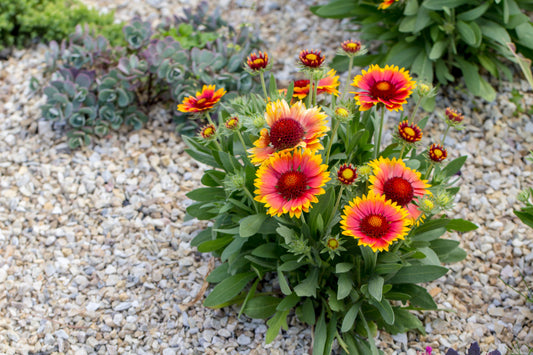Fritillaria Planting & Growing Guide
Planting Guide Information
-
Species dependent; 3-6"Planting Depth
-
Species dependent; 4-12"Planting Proximity
-
FallPlanting Season
-
Unusual flowers provide interest in the Spring garden.Plant Benefits
-
ModerateWater Quantity
-
SpringBloom Season
-
Full to Partial SunSunlight Quantity
-
Zones 4-9Hardiness Zones
Additional Growing Information
Where to Plant
Fritillaria fancy a home with well-drained soil but will tolerate various light conditions, from full sun to partial shade to dappled shade, depending on the specific variety. If you notice puddles of water 5–6 hours after a hard rain, scout out another site or amend the soil with organic material to raise the level 2–3 inches. These plants are great for containers or outdoor plantings but will not thrive in soggy soil or standing water.
When to Plant
Fritillaria bulbs should be planted sometime between late summer and early fall, giving the bulbs time to start rooting before the soil cools. Roots will develop in the fall, with foliage and flowers forming in the spring.
How to Plant
- Dig holes and plant the bulbs 5 to 6" deep and 10 to 12" apart for Crown Imperials or 4" deep and 4" apart for Yellow Fritillaria, Checkered Lilies, and Purple Bell Fritillaria. The bulbs are round and should be planted with the small points or indentations facing upwards.
- Water thoroughly, gently soaking the soil to settle it around the bulbs.
How to Grow
- Water as needed during active growth periods, supplying about 1” of moisture per week.
- Leave the foliage in place after blooming has finished for the season. The leaves will gather sunlight to create food through photosynthesis, strengthening the bulb for the future.
- Remove the dry foliage when the leaves turn yellow and die back around early to mid-summer.
- Allow your Fritillaria to rest for a few months before beginning the next growing cycle in spring.
Fritillaria Tips & Tricks
- Amend the soil with finely ground bark, decomposed manure, or compost to improve drainage and encourage a healthy start.
- Plant Crown Imperial Fritillaria towards the back of the border. Some noses find their smell unpleasant.
- Wear gloves when planting Fritillaria if you have sensitive skin. Some experience an itchy or tingly sensation when handling the bulbs.
- Avoid planting in containers, as Fritillaria do best when left undisturbed for long periods of time.
- Don't worry if your bulb arrives with a hole in the top. This spot is indicative of where last year's stem grew, and while it looks rather odd, it's totally normal.
- Bear in mind that Fritillaria prefer dry sites when they are dormant.
- Feel free to cut the shorter Fritillaria flowers when in bloom for striking bouquets. However, be mindful that cutting the stems of Crown Imperials often takes 1/2 to 2/3 of the stalk, which can negatively impact the following spring's flower production.
From the Family
-
Fritillaria - Checkered Lily Meleagris
25 Fritillaria BulbsRegular price $10.00Sale price $10.00 Regular priceUnit price per$19.9550% Off -
 50% Off
50% OffFritillaria - Checkmate Mix
50 Fritillaria BulbsRegular price $19.98Sale price $19.98 Regular priceUnit price per$39.9550% Off -
Fritillaria - Checkered Lily Meleagris White
25 Fritillaria BulbsRegular price $10.00Sale price $10.00 Regular priceUnit price per$19.9550% Off -
 50% Off
50% OffFritillaria - Persica Plum Bells
1 Fritillaria BulbRegular price $5.98Sale price $5.98 Regular priceUnit price per$11.9550% Off -
 Sold out
Sold outFritillaria - Persica Alba
1 Fritillaria BulbRegular price $5.98Sale price $5.98 Regular priceUnit price per$11.95Sold out








